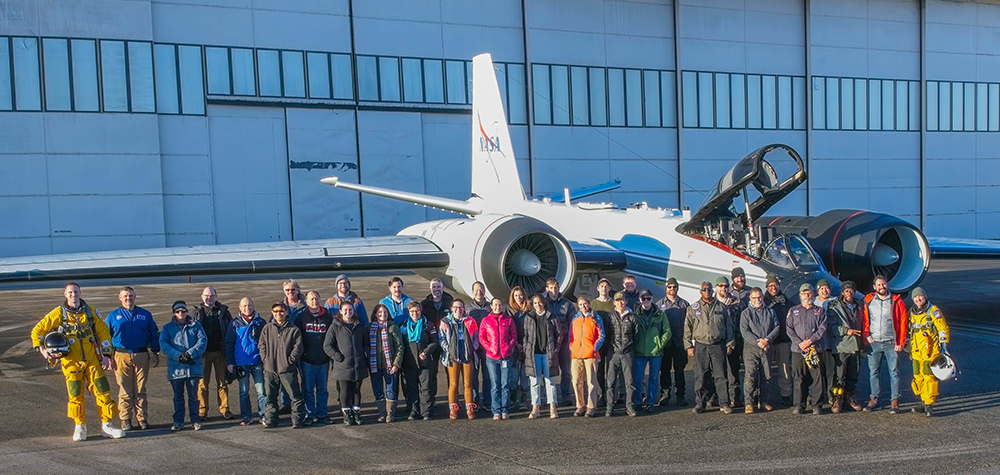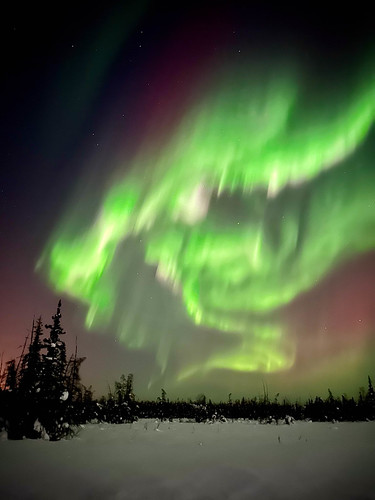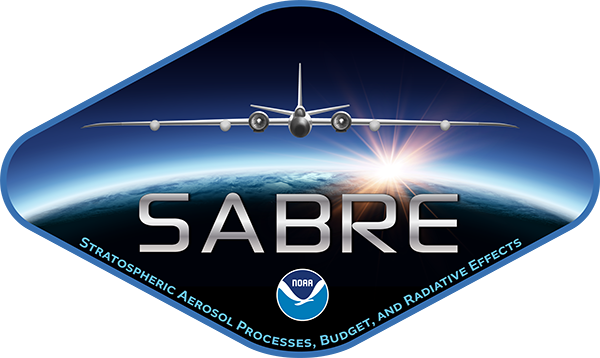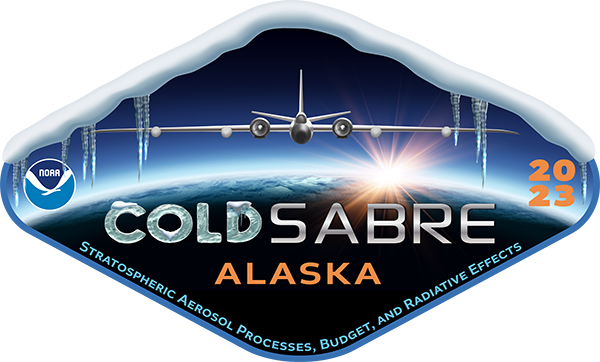Programs
Platforms: Aircraft
NASA Johnson Space Center: WB-57
Photos
flickr album: SABRE 2022 Test Flights on the NASA WB-57 at Ellington Field in Houston, TX
flickr album: more SABRE 2022 Test Flights

flickr album: Cold SABRE 2023

Postcards

Postcard from the Field: CSL's SABRE Mission Gets Airborne in Alaska to Study the Polar Stratosphere. 18 May 2023
The first series of research flights under NOAA CSL's airborne science mission to the stratosphere was completed in March, and analysis is now underway on an unprecedented data set detailing the composition and chemistry of the mid-latitude and polar stratosphere.
The overall mission, known as SABRE (Stratospheric Aerosol Processes, Budget, and Radiative Effects), is making use of one of NASA's WB-57 high altitude research aircraft to collect the most detailed measurements to date of gases and aerosols in the stratosphere. The motivation behind SABRE, the flagship field campaign of NOAA's Earth's Radiation Budget (ERB) research program, is to improve our fundamental understanding of the chemical composition of the stratosphere and the processes that govern it.
Of particular importance to this project is understanding how natural events (e.g., volcanic eruptions and wildfire pyrocumulonimbus) and human-caused emissions (e.g., rocket exhaust) perturb stratospheric aerosol composition, microphysics and radiative properties, which in turn can have significant impacts on stratospheric ozone chemistry and our global climate. Understanding the current state of our stratosphere is especially critical for evaluating how the stratosphere will respond to direct injection of sulfate aerosol, which is proposed as a method of solar radiation management or climate intervention.
This first deployment, dubbed "Cold SABRE", operated out of Eielson Air Force Base in Fairbanks, Alaska. Twelve research flights (from Alaska–there were also the two transits each direction and three science flights from Houston) were conducted from late February through late March, probing the very well-aged air of the polar stratosphere and polar vortex. The aircraft carried 17 state-of-the-art instruments, several of which were designed and custom-built at CSL, to measure ozone, water vapor, SO2, NOx, chlorine and bromine gases, black carbon, aerosol size distributions, and aerosol chemical composition. The new technologies and advanced instrumentation on-board the aircraft for SABRE are able to make measurements at much lower levels than was possible on past missions and to make new measurements of chemicals that have never been directly measured in the stratosphere.
SABRE is a NOAA Earth's Radiation Budget (ERB) Initiative project.
Learn more about SABRE.
Top left: WB-57 on take-off from Eielson Air Force Base (photo by Max Dollner). Middle left: Researchers from the University of Vienna work on their wing-mounted cloud and aerosol instrument. Middle: CSL scientist Chuck Brock works on his aerosol sizing and distribution instrument, which gets mounted within a pallet in the belly of the aircraft. Bottom left: Team photo of scientists, pilots, engineers, and ground crew in front of the WB-57 at Eielson Air Force Base. Left: Enhanced solar activity brought stunning displays of aurora borealis during the project (photo by Max Dollner).

Postcard from the Field: High Altitude Test Flights Begin for NOAA CSL's SABRE Mission in Houston, Texas. 17 February 2022
Test flights for the Stratospheric Aerosol processes, Budget and Radiative Effects (SABRE) mission started this week in Houston, TX. Scientists from NOAA's Chemical Sciences Laboratory and CIRES, along with NASA and university partners, have been at Ellington Field for the past two weeks to test new atmospheric instrumentation on NASA's high-altitude WB-57 research aircraft. The test flights allow the scientists to check the performance of research instruments, many of which are newly developed or have never been flown at extremely high altitudes.
NOAA CSL's SABRE mission will study the chemistry and composition of the upper troposphere and lower stratosphere up to altitudes of 60,000 ft. The instrumentation on-board will capture real-time measurements of trace gases such as ozone and chlorine compounds, as well as the composition, microphysics, and radiative properties of aerosols. SABRE measurements will ultimately enable more accurate quantification of the direct and indirect climate impacts from variations in stratospheric aerosols and gases in the present-day atmosphere and provide a foundation for estimating changes in aerosol radiative forcing under future climate scenarios.
SABRE is a NOAA Earth's Radiation Budget (ERB) Initiative project.
Learn more about SABRE.
Top left: Mike Lawler (NOAA CSL / CIRES) installs the PALMS single-particle mass spectrometer in the nose of the WB-57. Top middle: Andrew Rollins, (NOAA CSL), and Eleanor Waxman, (NOAA CSL / CIRES), install a pallet holding laser-induced fluorescence instruments to measure nitrogen oxides (NOx) and sulfur dioxide (SO2) into the fuselage in the bottom of the WB-57. Top right: Samantha Lee, (NOAA CSL / CIRES), works on custom instrument control programming on the new stratospheric chemical ionization mass spectrometer (CIMS). Bottom: Group photo of scientists, pilots, engineers, and ground crew in front of the WB-57 following a test flight.




